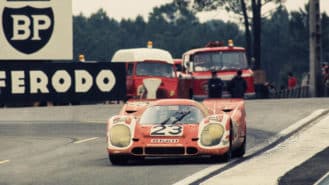
Porsche 917 – Le Mans legends remember Stuttgart's first winner
The Porsche 917 made waves on its debut, eventually marking itself out as a sports car icon – is it your 'Race car of the Century'?
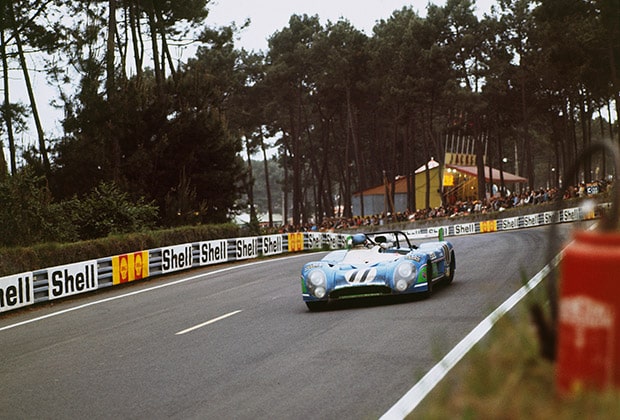
Taken from the July 1973 issue of Motor Sport
By Andrew Marriott
Last year’s victory by Matra was somewhat hollow thanks to the lack of opposition, notably from Ferrari, but this year it was an altogether different story. The Prancing Horse made a determined effort to stop Matra winning France’s most important race by fielding a three car team with the intention of bringing the honours back to Italy for the first time in eight years. The result was a stern battle between the two manufacturers and was in the balance until 90 minutes before the finish. It was only then that the Matra of Henri Pescarolo and Gerard Larrousse got the upper hand and was able to drive home to a victory that brought tears to the eyes of thousands of Frenchmen. This time there was no talk of hollow victories for it had been fairly and squarely won in a classic show of speed and reliability.
When the first Le Mans was held just 50 years ago, surely no one envisaged what a spectacle and money-spinner the event would turn out to be. But the idea of a 24 hour race to test the endurance of the cars and the teams is as valid now as it was then. That the race attracts such huge crowds is a little more surprising. They flock in their tens of thousands to get tired, dirty, perhaps bored, almost certainly fleeced by everyone selling anything and still they love it. One can only explain that there is a sense of participation, of being part of the whole grand occasion.
One of the reasons given for Matra’s withdrawal from Formula 1 was that they intended to concentrate on sports car racing and particularly Le Mans, following last year’s success. Four cars were entered – three in the latest MS670B trim and a fourth in the same trim as last year. The three newer cars were all fitted with the new Porsche gearbox designed for customer use in long distance racing. The five-speed boxes are very expensive but Matra knew that the investment would be repaid for the cheaper ZF or Hewland boxes were unlikely to prove beefy enough for 24 hours at Le Mans. All three cars had special long Le Mans bodies with full width wings, were running 13in diameter Goodyear tyres all round and had several other tweaks. The driving team was all French – François Cevert/Jean-Pierre Beltoise, Henri Pescarolo/Gerard Larrousse and Jean-Pierre Jabouille/Jean-Pierre Jaussaud. None of the cars had raced before, which shows the investment Matra were putting into the event. There was a fourth older car for Patrick Depailler/Bob Wollek, which was set up exactly as last year’s car. The Algerian Bernard Fiorentino was reserve driver but all he did was to practise the fourth car briefly.
While Matra have been planning and building up to the race for 12 months, Ferrari’s welcome decision to participate was a late one and the team gave the April test day a miss. At that stage it looked as if they would forego the confrontation with Matra for the second year running. But there must have been a change of heart at Maranello and sure enough there were three 312Ps ready to give Matra a hard time. Unlike Matra, Ferrari used three of their existing cars and the main modification was to mount the rear brakes back in the outboard position (to enable discs to be changed more easily should the necessity arise), the fitting of long tails as seen on the cars at several high speed circuits and endurance specification engines. The driver line-up was, as usual, Jacky Ickx/Brian Redman, Arturo Merzario/Carlos Pace and Carlos Reutemann/Tim Schenken. Both Matra and Ferrari colour coded their cars in the usual fashion, so it was easy to tell one from another at a simple glance.
The days of British victories at Le Mans seem past but at least there was hope this year with the Gulf Research Racing team bringing along a pair of cars plus a spare. Following their Spa success, Gulf had given Nürburgring a miss in an attempt to make a determined effort at Le Mans. The Weslake-powered coupé, seen briefly at the Test Day, had been abandoned at least for this year and the M6s were available for Derek Bell/Howden Ganley and Mike Hailwood/John Watson – making his comeback following his Race of Champions accident. Vern Schuppan was the reserve driver and practised both cars. Bell/Ganley had a brand new car, M605 and Hailwood/Watson M604, both were fitted with brand new Cosworth V8 engines, while ZF gearboxes replaced the normal Hewlands. The cars were much better turned out that earlier in the season and one had the feeling that the team might well give the Italian and French rivals something to think about.
There were other Cosworth DFV-powered 3-litre cars as well but one had the feeling that their chances were extremely slim. There was the Lola T282 of Jean-Louis Lafosse/Reine Wisell/Hughes de Fierlant which looked smart in its Gitanes cigarette livery, but hasn’t proved reliable so far, plus an older Lola T280-DFV, patently unprepared for 24 hours, for Rouveyan/Mons/Ethuin. Finally of the Cosworth-powered runners Alain de Cadenet again shared his own special, named the Duckham, with Chris Craft. Since its excellent showing last year the car had been re-bodied and the suspension geometry altered at the front but in this new form was virtually untested.
Also in the prototype class were the two works Porsche Carrera RSR from Martini Racing to be driven by Gijs van Lennep/Herbert Müller and Claude Haldi/Reinhold Joest. Both cars had special bodies mainly of glass fibre with huge flared wheel arches to cover the Porsche 917 wheels that had been fitted. There was no doubt that Stuttgart was taking the race seriously. Meanwhile there were several older Porsches – a pair of 908/3s plus two 908/2s, one of which had been brought all the way from Ecuador and a 2-litre 910.
Alfa Romeo decided to give the race a miss this year but works personnel were helping out Scuderia Brescia Corse with their last year’s 33TT3 which was shared by Carlo Facetti/Teodoro Zeccoli/’Pam’. There were a trio of Ligiers with two works cars looking very smart for Guy Ligier/Jacques Laffite and Jean-Paul Paoli/Alain Coudere plus an older and less well-tweaked example for Marche/Laurent/Delalande.
The rest of the prototype entry was made up by a smattering or 2-litre cars which rarely do well at Le Mans. The most interesting of these was undoubtedly the Japanese-built and designed Sigma which was powered by a Mazda rotary engine rated at 2.3-litres. Just to confuse matters the word Toyota was painted across the rear wing. The neat little car was fitted with Bridgestone tyres, except when drivers Tetsu Ikuzawa or Patrick Dal Bo wanted to go quickly, then an inscrutable switch to Firestones was made. The French-entered Chevron B23 powered by a Schnitzer BMW engine for Pierre Maublanc/Barrie Smith was a promising 2-litre while Christine Beckers became the second woman ever to take part at Le Mans – she shared a Chevron B21 with Roger Dubos.
The main excitement of the Le Mans start these days is not the patter of feet and the roar of engines bursting into life, but simply whether the pace car will manage to time everything correctly and guide the rolling start field to the start line at exactly 4.00pm. This was done without a hitch and, as the French tricolour dropped, Arturo Merzario immediately poured on the power and rushed into the lead. By the end of lap one he had a four second lead and was obviously setting a pace well above a safe limit for 24 hours. Cevert was second with Pescarolo third, then came Schenken’s Ferrari, two more Matras, the two Mirages nose to tail, and Lafosse in the Lola. Brian Redman had dropped to 10th place, obviously playing the opposite role to Merzario.
The Duckhams was soon in trouble and, after two laps, de Cadenet stopped for the bodywork to be investigated. It was starting to break away from its mountings, due to the down pressure from the large rear wing which patriotically had been panted with a union jack. The car made many stops as the body was reinforced in stages. Another blow to British hopes also came in the first hour when Hailwood brought the Mirage in to have the clutch adjusted and lost a lap in the process. But the car soon started to climb back up the field.
Meanwhile, Merzario was extending his lead all the time until he stopped for fuel after only 50 minutes – thus handing the lead to Cevert. But Cevert and the other leading drivers soon followed suit so that Merzario was soon back in front again, some 41sec ahead of Cevert. Pescarolo, Schenken and Jabouille were running in convoy and contesting third place – but it was early days yet. Lafosse had already lost a good deal of time having a broken throttle cable fixed while a first hour retirement was the works Capri of Birrell which had a tiny screw fall out of its distributor which did a lot of damage. Burrell later returned to the pits with the offending article and so it was two Fords versus two BMWs in the saloon category. Birrell was soon installed in the Vinatier/Koinigg Capri but that also struck problems and kept breaking fuel injection pump belts. BMW were also in trouble for Chris Amon was cruising round slowly with his car stuck in top gear. This was eventually fixed, although quite how BMW managed it without changing the whole box, which isn’t allowed, we find it hard to imagine. Later in the evening the car was going like a rocket and definitely had all five gears!
Just before the second hour was up the Mirage team suffered a major setback when Bell came into the pits to report he was unable to select any gear, except fifth. In fact the input shaft had broken and the team set about the arduous task of rebuilding the gearbox. The job took over three hours, putting the car completely out of the running.
As the two hours were up, with Pace now having taken over from Merzario, the Ferrari’s lead was 76sec over Cevert. But then Ferrari suffered their first blow. Pace rushed in with the back of his overalls soaking wet with petrol. The seat tank had split and fuel was slopping about. The car lost six laps while the fault was rectified and Matra went into a commanding lead. Cevert/Beltoise led a Matra 1-2-3 although Reutemann looked as if he would soon split them up. Merzario was blasting around making up for lost time and lowered the lap record to 3min 40.4sec in the process.
Matra were not without their share of problems and after three hours they had their first long stop. Jaussaud had a tyre throw a tread on the Mulsanne kink and he only just managed to control the car after a lurid moment. He finally drive back slowly to the pits but the bodywork was damaged by the flailing tread and it took 11 laps to patch up the car. The tyre trouble was a portent of similar things to come.
As evening came some of the huge crowd started to drift away to eat, enjoy the fun fare or otherwise turn their interest away from the motor racing. But we took a trip down to Mulsanne corner to watch the motor racing! It was well worth the journey for, within minutes of arriving, about 8.30pm, Beltoise appeared with his left front wheel leaning at a crazy angle. His tyre had just thrown a tread, which had broken a lower wishbone. Just past the signalling pits he stopped and got out of the cat to inspect the damage. Then he drove slowly on towards the pits. In fact the damage took about eight laps to fix and the car had dropped to eighth place when the fifth hour positions were announced.
There were several other battles going on and lap after lap Willie Green in the JCB Ferrari and Hans Stuck in his BMW were swapping places on the road. Both the Lafosse/Wisell Lola and the Duckhams were in further trouble but British hopes were brightened by the Hailwood/Watson Mirage which was running strongly as night fell. Already out of the running was the second Martini Porsche which had stopped with an empty fuel tank – red faces all round, the Rouveyan Lola with a seized wheel bearing and the Chevron of the Juncadella brothers which had been running strongly. The Chevron-BMW of Maublanc blew up and the Japanese Sigma had a worksheet of problems. The leading Ford Capri of Glemser/Fitzpatrick lost time having valve springs changed, handing the saloon car class lead to BMW for the first time.
As the dark gathered the tense struggle between Ferrari and Matra turned back to the favour of the Italian team. The French had suffered a major blow when Depailler limped his car into the pits at just before 10.00pm, with the engine starting to seize. It was retired, so now it was three Ferraris against three Matras.
Making up for the time lost with the tyre and suspension problems, François Cevert was again driving with the form that had produced his recent Grand Prix performances. Just before midnight be set up a new lap record of 3min 39.6sec – in the pitch black. It was not to be bettered.
Midnight came round and with it one third distance. In the lead was the Schenken/Reutemann Ferrari, two laps ahead of the Ickx/Redman Ferrari. A further lap down was the Pescarolo/Larrousse Matra while the Hailwood/Watson Mirage was now fourth and soon to move up another place. Merzario/Pace had moved up to fifth spot ahead of the Facetti/’Pam’/Zeccoli Alfa Romeo. Cevert and Beltoise were now seventh ahead of the works Porsche Carrera of van Lennep/Müller which was running like a train. Ninth was another reliable Porsche, the 908/3 of Fernandez and Chenevière while Elford/Ballot-Lena had moved to the front of the GT category with their GTB and lay 10th overall.
The Bell/Ganley Gulf Mirage was back in the race after delays totalling almost five hours.
Just after midnight the Gulf team’s hopes of victory were completely dashed. They had put reserve driver Vern Schuppan into the cat to give Watson and Hailwood a good rest but the unfortunate Australian ran out of road a Tertre Rouge, hit the Armco and the car cannoned back into the road finishing upside down with Schuppan trapped inside. After a couple of minutes he was released, unharmed and returned to the pits to explain all about it to John Wyer and John Horsman. It was a great shame because the car was running faultlessly. It really could have given Britain a chance of victory and shaken the combined forces of Ferrari and Matra.
Ferrari suffered a major blow at 2.30am when Carlos Reutemann rolled into the pits from the blackness of the night with a dead engine. It was very dead because, as he stopped, a pool of oil gathered under the car from a ventilated block. The leaders were definitely out and so Ickx/Redman now led this race and had a couple of laps in hand over the Pescarolo/Larrousse Matra. Thanks to reliability the Brescia Corse Alfa Romeo was now up to third place overall and Cevert/Beltoise were back up to fourth position but hit tyre problems again. Again it was on the Mulsanne Straight with Beltoise at the wheel and hit a guardrail. Now there were just two Matras, and the second placed one had also run into tyre trouble but with less dire consequences.
The night claimed Stuck’s BMW after it left the road at Indianapolis Corner, the Duckhams which finally gave up with a broken wishbone, and various other weaker cars fell by the wayside. But at least the darkness had brought neither the rain nor fog which are so often a feature of Le Mans. As the light came up the cars looked far less travel stained than usual, except those that had engine trouble. The sole British entry in the GT category, the Green/Corner JCB Ferrari had moved up well in the night and was 11th overall by breakfast time. But it was looking a little worse for wear and sadly it retired just before 9.00am with a broken differential.
As the light had come up the engine note of the leading Ferrari had changed noticeably and by 8.00am it was sounding dreadful – the exhaust system was falling off on one side and this tends to cause all kinds of overheating problems with the valves. Naturally the car had slowed but was still a lap ahead of the Pescarolo/Larrousse Matra – the battle was still on. The surviving Mirage fell out with engine trouble while the remaining Cosworth V8-engined car – the Gitanes Lola – was finally retired about an hour later. The Alfa Romeo was also in trouble at breakfast time due to a seized gearbox bearing. This necessitated a major strip down and the car fell right down the results and though it finished it was not classified.
By 9.00am Larrousse had moved the Matra onto the same lap as the Ferrari, so it was still neck and neck with the Ferrari now keeping the gap constant. But at the next pitstop Ferrari decided to replace an exhaust pipe and Matra moved back into the lead for the first time since the previous evening. But the very next lap Larrousse pulled in to report a fractured brake pipe at the rear. It took six minutes to fix and meanwhile Redman took the Ferrari back into the race and possibly the lead. But as the Ferrari approached the pits, the Matra roared back into the race and thus stayed in front. The Ferrari still sounded rough and soon the Matra opened the lead to some 20sec.
But at 11.00am all chance of a Ferrari win seemed gone. Ickx brought the car in to report a fuel leakage and it was soon found to be a repeat of Merzario’s problem from the previous day. Twenty-five minutes and six laps were lost. The other Matra still running, that of Jabouille/Jaussaud, went missing from fifth place for a while when it stopped on the Mulsanne Straight. But after 20 minutes Jabouille found a loose wire from the coil, replaced it and returned to the race. Meanwhile the Merzario/Pace Ferrari was still being driven hard and was now third. The Capri of Fitzpatrick/Glemser fell by the wayside when a connecting rod broke leaving the sole surviving BMW, the saloon car winner if it could complete the final four hours without trouble. A late retirement was the Posey/Minter Ferrari GTB which burned out a piston.
At mid-day the order was Pescarolo/Larrousse in first place, Ickx/Redman second, four laps ahead of team-mates Merzario/Pace. Then, 16 laps down, came the reliable Müller/van Lennep Porsche which was about to be re-passed by the Jaussaud/Jabouille Matra. The Toblerone Porsche of Fernandez/Chenevière was sixth ahead of GT leaders Elford/Ballot-Lena. The two drivers from Ecuador had experienced no trouble with their Marlboro sponsored Porsche 908 and were up in eighth place ahead of the second Pozzi Ferrari GTB of Dolhem/Serpaggi while the Schickentanz/Kremer/Keller Porsche completed the top 10.
It was just on the stroke of midday that Pescarolo came in for a routine stop but, that completed, the engine failed to restart on the button. The starter motor had got very hot due to its close proximity to the exhaust. This item may not be replaced but can be rebuilt and this is what the team had to do. With every minute the lead was reduced as Ickx droned around in the sick Ferrari. After 25 minutes the job was complete, the car fired up and was away still in the lead but only just.
The Matra was obviously healthier than the Ferrari but the cars were still on the same lap after over 20 hours of racing. The battle continued for the next two hours but came to a final and sudden end at 2.30pm. Ickx’s car was overdue and after a minute of peering down the road the Ferrari team saw their car limping in. Ickx immediately stepped out of the car, took his helmet off and said that the engine had finally given up the struggle. The fault was probably a valve-gear failure. Sadly, the car was pushed away.
Without further drama Henri Pescarolo reeled off the remaining laps and flashed across the Le Mans finishing line to take the chequered flag for the second time in two years. It was a great victory for Matra and one which had not come easily. Ferrari had to be content with the second place of Merzario/Pace some six laps behind. Third was the Matra of Jaussaud/Jabouille just three laps ahead of the Müller/van Lennep Porsche.

The Porsche 917 made waves on its debut, eventually marking itself out as a sports car icon – is it your 'Race car of the Century'?
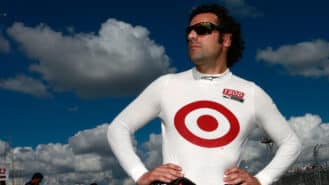
Dario Franchitti had a deal in principle to drive Porsche's all-conquering 919 in the 2015 WEC campaign before a horror IndyCar crash forced him into retirement. The Scotsman relives a world of 'what-ifs?' in Motor Sport's latest Centenary Stories podcast episode
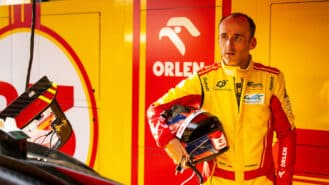
Robert Kubica was set to be Ferrari's next star F1 driver until he suffered a devastating accident in 2011. Now, 13 years on, the Pole is finally for the Scuderia — in a WEC Hypercar. He tells James Elson how he never gave up on the dream
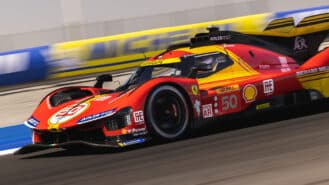
WEC looks to be hitting its stride in 2024 – but some Hypercar teams are far from happy with the way its Balance of Performance system is playing out